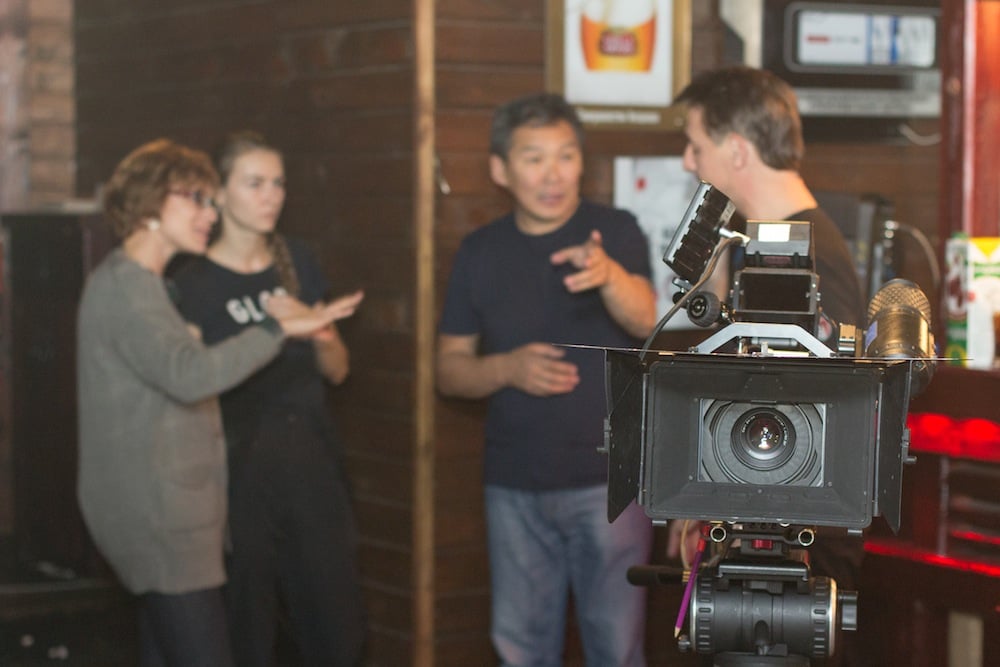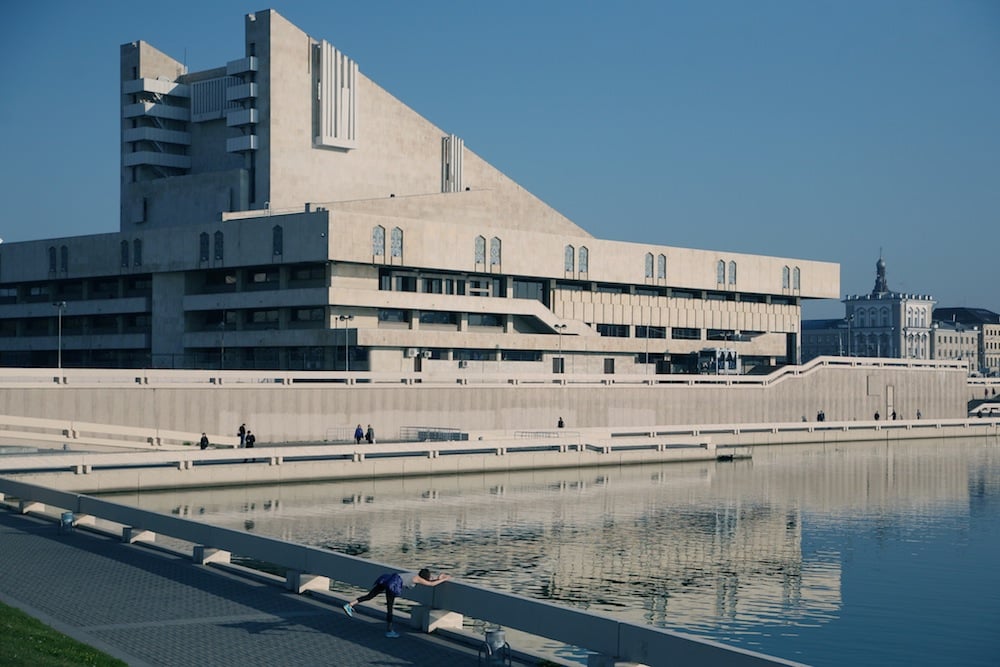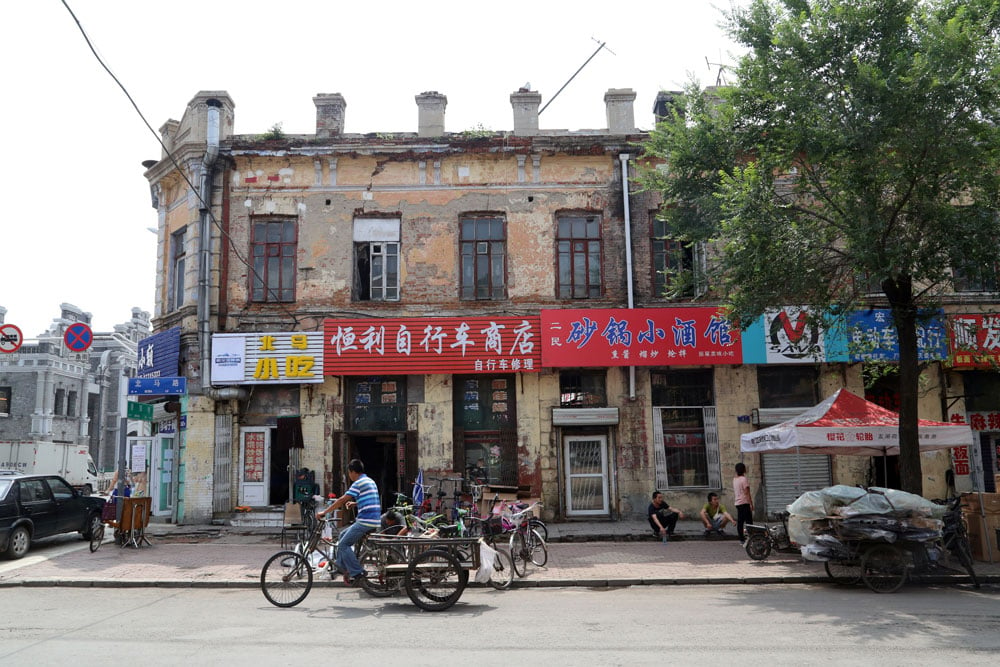Golden hoard: invading nomads in Russia and China

Both Russia and China experienced Mongol invasions that shaped their identities; today this common history may be more relevant than ever
“Panmongolism — fierce the word may seem, yet how I love its sound”
Vladimir Solovyov, 1894
History, scheduled to end in 1991, seems to have continued; the growing closeness between Russia and China is giving aging Cold Warriors a sense of déjà vu. The two nations have collectively opposed western modernity before, but parallels in the historical experiences of the two nations go even deeper. China and Russia both experienced invasions from nomadic Mongol horsemen, which profoundly shaped both cultures. And the shared post-socialist dalliance with western capitalism seems to fall into the same cultural rubric as the Mongol hordes once did; a comfortable but unchanging homeland transformed by foreign visitors, who might provide modernisations but do so with cruelty and insensitivity to local culture. Once again, the common people of Russia and China find themselves and their cultures besieged by rootless, hyper-fast nomads — this time, however, they’re wearing suits.
The geographic vision of a civilised and wealthy Europe to the west versus a barbaric and slovenly Asia to the east has long been built into the structure of Russian culture; the city of St Petersburg being perhaps the most visible monument to this notion. Those endless Russian steppes were once the land of nomads; Siberia’s oil fields were once the terrain of Manchurian shamans, Buryats and Mongols; and Russian history abandons its ancient Rus roots by beginning with the Mongol-Tatar Yoke in the 13th century. Russian culture was perhaps formed in response to the invasion of these nomadic peoples — a prism that still gives the Russian state a paradigm for its suspicions of the west. The national narrative of Russia as a simple, honest heartland vulnerable to foreign invasions runs deep, provoking defensive attitudes that to outsiders might even resemble paranoia. A culture which crystallised at a moment of trauma forever relives that trauma, projecting, in this case, a vision of the nation as pure and the motives of outsiders — including westerners — as questionable.
However, paradoxically, by repressing and sublimating identity in response to these invaders, Russian state organs and cultural tendencies have taken on some of the components of those nomad cultures. In other words, if Russia “absorbed” various waves of barbarian invasions, protecting the west from deep incursions, it did so at the cost of internalising and taking on some of the characteristics of these nomads.
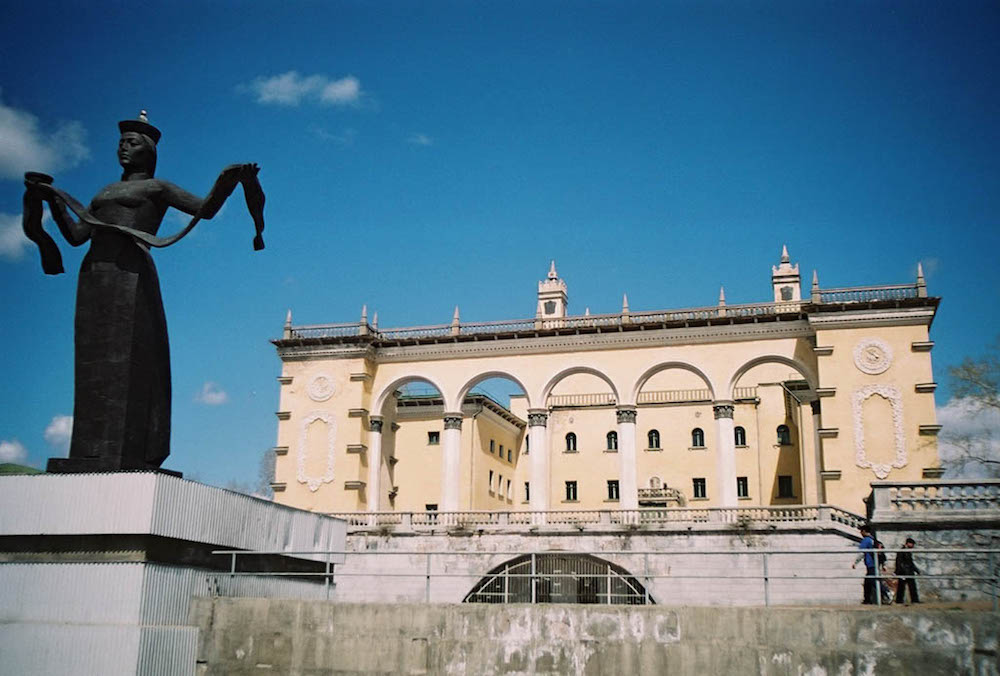
Mongol statue in Ulan Ude, Buryatia, Russia. Photograph: Geoff Sowrey under a CC licence
Western observers of Russia, from French philosopher Joseph de Maistre in the 18th century to Polish-American academic Richard Pipes in the 20th, have long had this thesis: by absorbing and blunting the flow of Mongol hordes into Europe at the start of its civilisation, Russia became a fusion of Asiatic brutality and European man, the perennial bastard child of the west. In the minds of the great figures of Russian culture, from Peter the Great to Fyodor Dostoyevsky, the same fear has persisted: are we really Asiatic?
For the Russian avant-garde, from Aleksandr Blok’s poem Scythians to Igor Stravinsky’s Rite of Spring to the anthropological theories of Soviet historian Lev Gumilev, Asia has been a tantalising source identity, one of horror and attraction, to be counterposed to the limitations of European identity — even as Russians like Vladimir Nabokov and Alexandre Kojève were bringing to Berlin and Paris their vision of Europe as being synonymous with civilisation. The East, the unknowable, the inscrutable; if the Enlightenment appealed to the Russian superego, Asia always seemed to call to its id.
Russia became a fusion of Asiatic brutality and European man, the perennial bastard child of the west
Things today look rather different. To the west lie decadent economies beholden to Russia for natural resources; it is in Asia, and particularly China, where the action is. From Vladimir Putin to the young intellectuals at the Strelka Institute, Russians are increasingly looking to China as a model, and discovering surprising genealogies; Russians built cities in China, wrote almanacs about China, and had children with the Chinese long before any other Europeans saw the point. A person from the north of China going to Russia would find the food to be about the same; among China’s 56 official ethnic groups, “Russian” is the only one that is, should we say, European.
Moscow and Beijing’s history goes back further than the shared legacy of Stalinism. If Muscovy, the historical core that expanded into today’s Russian culture, was forever moulded by the Mongol-Tartar Yoke, Beijing was as well — for although Chinese culture is notoriously 5,000 years old, Khanbaliq, now Beijing, was founded by Mongol emperor Kublai Khan. The urban civilisations of both Russia and China had their inception in a series of near apocalyptic encounters with nomadic warriors — Mongols, Manchus and Huns.
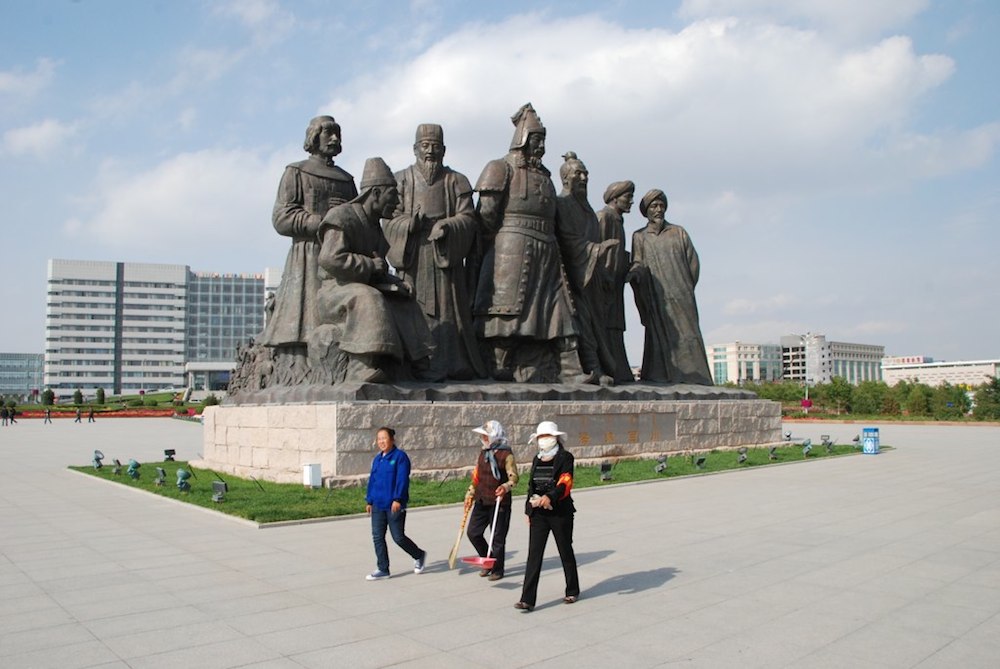
Genghis Khan monument, Kangbashi, Ordos, China. Photograph: Bert van Dijk under a CC licence
However, much as a critique of the Q’ing dynasty in China has been mobilised for the ends of ethnic nationalism, the Golden Horde, as the Mongol khanate was known, seems to have been unfairly maligned. The men on horseback brought with them the first paper money and a postal system. The arts also flourished, from icon painting in Novgorod (where churches no longer had to pay tribute to the tsar) to architecture in Suzdal. Much as the Manchurians did in China, the Mongols seemed content to live and let live.
It is clear, or should be, that Russia’s historical Asian “other” was never really the China of the Han Chinese — the ethnic group which overwhelmingly dominates China; in fact, the striking similarities between modern Russia and modern China may have a point of origin in the historical encounter around 800 years ago with the nomads whose territory is sometimes called Siberia, sometimes Mongolia, sometimes Manchuria.
The striking similarities between modern Russia and modern China may have a point of origin in the historical encounter with the nomads
Much as Russian perceptions of China are balanced with the opposing “west”, Chinese interest in Russia fluctuates based on the relationship with the true “west”. During the 1990s, when American culture and the model of capitalism it presented seemed endlessly compelling, Russia seemed stale and tedious. In the neoconservative era of the “Chinese Dream”, though, Russia, the old “big brother”, seems compelling once more. Few Chinese seem to go to Moscow, other than extraordinarily vulgar merchants from Wenzhou; Shanghai and Beijing is where the money’s to be earned. But Putin’s stiff resistance to the west is widely admired in China; he says the things the Chinese wish their leaders could, if the economic ties with the west weren’t so important. On a recent trip to Harbin, the capital of China’s Heilongjiang province, during the height of the Malaysia Airlines MH17 crisis, local government officials expressed to me a wish that Putin would teach the Americans a lesson — a lesson that only Russia seems capable of teaching.
Both Chinese and Russian culture have enshrined within them the legacy of those first Mongol nomads; and as nomadic, mobile lifestyles — theorised as “nomadology” by the French radical philosopher Gilles Deleuze and actualised by multinational corporations — become de rigeur, it may be time to resurrect these gloomy shades of the past. The contemporary global economy is, after all, noted for many of the same attributes as the Mongol horde: brutal, overwhelmingly fast, and structured along the lines of complex, clannish patronage networks. The nomad, thought to have disappeared in the steppes of the past, has returned.
